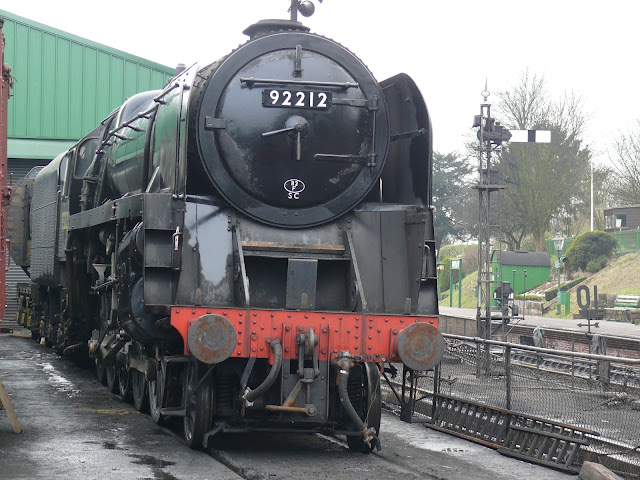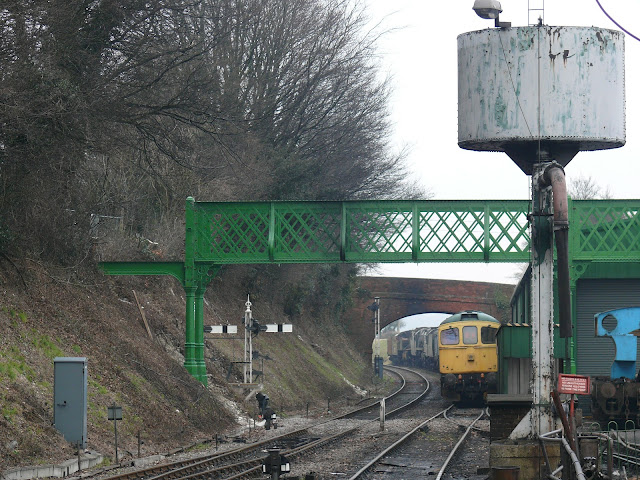I long time transport fan, from old buses, trams and trolleys, to old and modern trains and model railways, on to old road transport including lorries, cars & steam engines and then aircraft of any era.
Monday, 6 August 2012
Transport Blog: Catch-up Part II Acton Depot Open Day London Under...
Transport Blog: Catch-up Part IIActon Depot Open Day London Under...: Catch-up Part II Acton Depot Open Day London Underground - Piccadilly Line Metro-Cammell and Birmingham RC&W . (1938-tube stoc...
Catch-up Part II
Acton Depot Open Day
London Underground - Piccadilly Line Metro-Cammell and Birmingham RC&W. (1938-tube stock)
This Piccadilly Line stock was an addition to the 1,121 cars built for the Bakerloo & Northern lines. The additional 167 cars (91 new builds plus 76 conversions) for the Picc line were used on the London Underground until 1988. Although, some examples are still at work on the Isle of Wight as Class 483, making them the oldest passenger rolling stock operating timetabled services on the National Rail network.London Underground - 1967 Victoria Line Tube stock.
Built by Metro-Cammell the 1967 Stock was a fleet of deep-level tube stock which operated on the Victoria Line from when the line first opened on 1 September 1968 until 30 June 2011. 316 cars were built. The stock was the first opportunity to build cars which included many of the enhancements tried out in the 1960 Stock. They were designed for the Victoria Line, and each train consisted of eight cars, marshaled as two four-car units. Each unit had a driving motor car at both ends, and two trailer cars between them. This refurbished motor car in which Queen Elizabeth II traveled during the official opening of the line in 1969, number 3052, is preserved in a non-working condition. It was withdrawn from service in October 2010.Type UCC "Feltham" double deck electric tram No 355 - electric tram
This vehicle began its life in 1931, working from Finchley depot in north London. It had been built at Feltham in Middlesex. The streamlined design was adopted as the new standard and referred to as the Feltham type. In 1936, the Finchley routes were changed to trolleybuses and this tram was moved to routes around Brixton and Streatham. The Feltham tramcars were the last class of trams to be built for service in London. Trolleybuses proved to be flexible and more popular with the public and eventually took over from the trams.1931. A1-class "Diddler" trolleybus No 1, registration HX2756 - trolleybus.
This is the first London trolleybus. It was based at Fulwell depot, west London, the only depot dedicated to trolleybus operation and repairs. Trolleybuses were introduced by London United Tramways, which was part of the Underground Group. The design is based on the L.T.-type bus. The type became known as 'diddlers'. In 1948, the early trolleybuses were withdrawn from service having become worn out and in poor condition. By 1952 most were scrapped, but this Number 1 was preserved by the Museum of British Transport.1935 Q-type AEC single deck motor bus.
The Q-type was a revolutionary new design. Introduced by the London Passenger Transport Board and built by Associated Equipment Company (AEC). This bus had its engine mounted upright behind the driver. Number Q55 spent most of its working life operating on Country Area services around the Home Counties. During 1939-45, it was converted into an ambulance. When the Q-types were withdrawn from service in 1952, many were exported for use in the Mediterranean and Africa.1931, ST821 AEC Regent. In London Transport "Country" livery
This bus spent its life working on the Country Area services and was based at a number of different garages around outer London. The S.T.-type bus was based on the new 'Regent' chassis produced by AEC and introduced in 1930. The early models were operated by Thomas Tilling Limited on behalf of the London General Omnibus Company. Many of the early versions were subsequently sold to government agencies and converted into armoured cars.Friday, 3 August 2012
Catch-up time
Well it's been a while since I last blogged!! So here is a bit of an update on transport things I have seen and done, since Jan 2012.
Feb 14th 2012 at Ropley on Mid-Hants Railway.
British Railways Standard Class 9F - No. 92212, built in 1959 in Swindon, 2-10-0 wheel arrangement, operated in Southern, Western, Eastern, Midland, Scottish regions of BR. Designed for BR by Robert Riddles. The 9F’s were the last in a series of standardised locomotive classes designed for BR during the 1950s, and was intended for use on fast, heavy freight trains over long distances. It was one of the most powerful locomotive types ever constructed in Britain and successfully performed its intended duties. The total number built was 251, production being shared between Swindon (53) and Crewe Works (198). The last of the class, 92220 Evening Star, was the final steam locomotive to be built by BR, in 1960. Withdrawals began in 1964, with the final locomotives removed from service in 1968. Several examples have survived into the preservation era in varying states of repair, including Evening Star.
Construction work continues on the old Kings Cross (Harry Potter) bridge. That once spanned the platforms at Kings Cross station.The bridge will connect the upper car park area, to the yard and the new carriage shed gallery viewing area.
LMS 45379 is one of the successful “Black Five” 4-6-0 mixed traffic locomotives designed by William Stanier. Built by Armstrong Whitworth of Newcastle in July 1937 , 842 of this class were built . 45379 was operated by BR in the Midland and Scottish regions, it was moved to Willesden in 1964 from where it was withdrawn in the summer of 1965 going to Barry scrap yard later that year. In 1974 45379 was bought for restoration on the Avon Valley Railway, later going to The Great Central Railway. It was bought from there by MHRPS coming to Alresford on 1st March 2002.
British Railways Standard Class 4MT - No. 75079, as can be seen this loco is very much under restoration. 75079 is a BR standard Class 4 4-6-0 mixed traffic locomotive built at Swindon in January 1956, one of a batch built 80 for the Southern Region.The loco was withdrawn in 1966 and sent to Barry scrap yard, where it stayed until 1982. When it was bought by Plymouth City Council and restoration started at the Plym Valley Railway. In 2007 MHRPS bought the loco and restoration is now (2012) in progress.
Subscribe to:
Comments (Atom)









